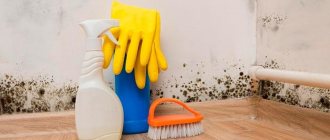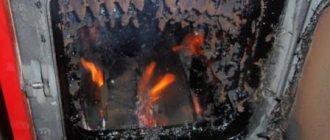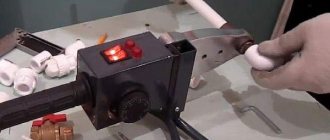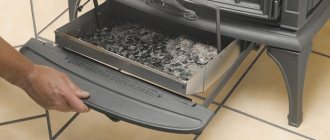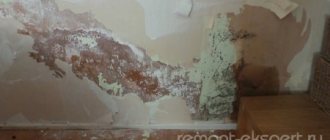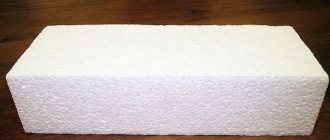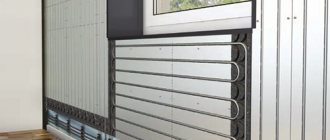Perhaps you have had to deal with the problem of mold on the walls, well, or you have probably heard about it.
The fact is that mold on the walls does not appear overnight, the process is gradual. It’s just that at first the owners of the room do not pay attention to the first signs of its appearance, but begin to sound the alarm when stains already appear on the wallpaper and “intricate patterns” appear. Such manifestations indicate that the mycelium has already grown several meters into the wall and exists for about several months. And so, when the conditions for mold fungus become optimal, for example, in a rainy autumn, when the heating is not yet turned on, spots of brown, pink, brown color begin to appear on the walls, mucus and even cotton-like growths may appear. Of course, this is not just a nuisance, it is a real disaster. Indeed, in addition to its terrifying appearance, mold is unsafe for health, and also leads to the destruction of walls, that is, peeling of any finishing material. How to get rid of damp walls and thereby fight mold? This article will talk about this.
Is it possible to get rid of mold and mildew on the walls?
There is an opinion, probably based on our own bad experience, that it is impossible to defeat the fungus. For example, some try to get rid of the problem by insulating the walls. But this approach not only does not help, but aggravates the situation, since the fungus feels great in thermal insulation material. Or, spotlights are powerful and bright lamps that are used to “dry out the mold.” Fungal spores quickly adapt to new conditions and easily tolerate drying out. Unfortunately, waterproofing laid over mold will not help either. The water will find a way to bypass all the tricks and the mold will “bloom” again. Neither office glue nor copper sulfate will help; these techniques are long outdated. Modern impregnations, primers and preparations against mold fungi provide a more visible effect, but there is no need to rush with their use, since the result can be temporary.
Wall treatment products
The simplest solution against fungus is lime.
A number of special preparations have been developed to combat fungal infections of structural surfaces. In addition, there are a number of home recipes that allow you to clean the wall of mold and mildew.
- Mortar. We take bleach and mix it with water in a ratio of 1 to 5. Using the resulting solution, we apply antifungal treatment to the walls.
- Belizna chlorine disinfectant can also be used to kill fungus and its spores.
- A fungicide diluted in water will help get rid of mold on the walls.
- Hydrogen peroxide can destroy small spores, preventing the spread of fungus.
- A solution of copper sulfate with water in a ratio of 1:100 is a universal remedy that destroys both mold and fungus and bedbug eggs.
In construction supermarkets you can find a wide range of factory-made antiseptic and bactericidal agents designed to combat fungal infections of building structures.
The table provides a list of the most common drugs produced domestically and imported.
Why are there problems when dealing with mold?
The main reason for failures in the fight against mold is the elimination of the consequences, the visible result, and not the cause of its appearance. And the reason is simple - dampness, which mold fungi love very much. This is what needs to be combated first of all with the help of a number of measures. If the air humidity in the room is 95% or more, and the temperature is +20°C, then the likelihood of mold appearing and spreading is very high.
Such a high level of humidity can occur in a living space in the following cases:
- there are plastic windows that are rarely set for “ventilation” and there is no air conditioning;
- a large accumulation of indoor plants in one place;
- frequent washing and drying of clothes indoors;
- cool indoor air with high humidity outside;
- there are roof leaks;
- problems with the water supply system, pipe failures;
- problems with the central heating system and plumbing networks;
- damage to the wall through which moisture enters from the outside, for example, during rain;
- improperly performed insulation of external walls.
Why does mold appear on walls?
- Moisture seeps in from the street through damage to the wall.
- Moist warm air indoors comes into contact with cold walls and moisture (condensation) forms on their surface.
- A communication problem that was not detected in time.
Until you know exactly the cause of mold, do not purchase any means to combat it, since each case requires a separate solution.
For example, external moisture. If mold appears on the walls, you need to not only remove the mold itself, but also part of the plaster. If the wall is damp inside, it means that moisture is coming from the street through cracks and treating the wall indoors with solutions and compounds will not help. To solve this problem, you can use different methods, the choice of which depends on financial capabilities and the specific situation. One of the most effective and at the same time affordable methods is to use an additional layer of plaster on the outside of the building. You should know that ordinary sand-cement plasters have low vapor permeability, so condensation forms between the coating and the wall. Consequently, the surface of the main structure will be wet all the time. The result of this is constant freezing and thawing of condensate, and, of course, the formation of mold. It will not take much time for the plaster, under such conditions, to simply fall off the wall.
Types and dangers of mold
Before you get rid of the mold that has appeared on the walls in your apartment with your own hands, let’s consider the dangers and types of fungus.
Black mold
The most common type of mold. The fungus causes great harm to health. You can find it on walls, wallpaper, wood and concrete surfaces, and even paint.
If you do not take emergency measures, very soon you will experience all the “delights” of intoxication. Asthma, bronchitis, permanent runny nose and cough - this is an incomplete list of diseases that you can get if you have black mold in your home. Fever and skin problems are also possible.
The danger is that black mold is often mistaken for ordinary dirt and is not removed. But this is not dirt at all. We are talking about a colony of dangerous microscopic fungi.
White mold
Her favorite habitats are bread, cheese, and soil. Often found in flower pots. Rarely develops on walls.
The cheese industry uses some types of white mold to make gourmet cheeses. This is the so-called noble mold.
Green mold
The peculiarity of this type of mold is that it affects food. Eating such food is fraught with serious poisoning.
Mold is afraid of the cold, but feels great in high humidity. Can settle on bricks and concrete.
mold rotting
You can meet an unwanted guest on walls with wooden coverings. The pigmentation of the fungus is brownish or grayish - depending on the degree of damage. New growths also tend to lighten and crack.
Mold blue
Furniture, frames (both window and door), and parquet suffer from this type of mold. Suitable for all wooden surfaces. When fungus appears, the coating becomes bluish. The paint peels off, even varnish does not save the situation.
What plaster should be used to plaster walls to avoid mold?
To prevent such problems, special plasters with additives are used, called sanitizing or drying plasters. They are based on a cement-lime mixture, since lime together with cement provides the mixture with softness and lightness. Additives in the composition are necessary to provide it with the porosity necessary for salt accumulation and constant movement of steam.
It is worth mentioning one more factor. In this case, we are not talking about wall insulation, although the fact that after plastering the walls the temperature in the room will rise by a couple of degrees is very pleasant.
Mold is dangerous to health
Mold in an apartment is a collection of various mold fungi that spread in the form of multicellular filaments. They reproduce using spores. Mold is absolutely everywhere: in water, in the air, in the ground and even in space, it is not afraid of radiation and has existed on our planet since its appearance. This is one of the most ancient forms of life on Earth.
Therefore, when processing, you need to remember that mold and mildew have survived all world disasters and feel great in our time .
There are many families, genera and types of mold, some of them are extremely harmful to humans, for example:
- Some molds produce secondary metabolites (antibiotics and mycotoxins), which in significant quantities can inhibit and negatively affect other living organisms.
- Mold can cause diseases in animals and humans such as aspergillosis, onychomycosis and some others (allergies, asthma, pneumonia, respiratory diseases, stomach upsets, emphysema, and so on, up to and including death from a combination of injuries).
Mold can cause illness and seriously impair the health of everyone who comes into contact with it..
The fact that often even doctors in the hospital cannot immediately determine the correct cause of a person’s illness does not add to the positive. Symptoms of mold poisoning are similar to other illnesses.
So mold has the following effects:
- Toxic. It manifests itself as dizziness, fatigue and disturbances in the functioning of the heart. Living in a home with mold for a long time often leads to cirrhosis of the liver.
- Allergic. Mold often causes allergies. The simplest manifestation is the formation of rashes on the skin and itching. More serious consequences are chronic rhinitis and bronchial asthma.
- Carcinogenic. The carcinogenic effect is observed in the development of malignant tumors.
If you find large areas of mold on the walls of your apartment or house, you should immediately call a specialist.
Why does condensation form on the wall and how to deal with it?
If there is no moisture inside the walls, the fittings and walled-in screws are not covered with rust, then the problem is internal condensation. The methods of struggle here are different.
The condensation formed in the wall is associated with the “dew point”. When the outside temperature changes relative to the indoor temperature, even if the humidity is normal, condensation appears on the walls. The dew point directly depends on the temperature difference between the air and the walls in the apartment and the humidity in the room. A clear example of this process is fogged windows. When it’s cold outside and the glass is also cold, and in the kitchen, for example, it’s humid and warm, condensation immediately forms on the windows and they fog up. The same thing happens with walls.
Ways to solve the problem
There are two main ways to solve this problem:
- Increase the thermal resistance of the walls so that the point is not on the inner surface of the wall, but inside. Or heat them, similar to what happens during the heating season.
- Reducing the relative humidity is probably the first thing to do. The temperature on the surface of the walls should not be low to prevent condensation from forming.
How to reduce indoor humidity? It is necessary to arrange its output to the outside through exhaust ducts. But, it should be remembered that in order for the air to be “extracted” it must be “pulled in” somewhere, which means it is necessary to ensure an influx of fresh air. Most often, ventilation in a living room occurs using a vent or a slightly open window. But, it is worth noting that the window is not able to cope with the tasks of ventilation, and it is unlikely to be possible to keep it open all the time. Therefore, it is worth thinking about fresh air ventilation. Of course, the best option would be a comprehensive solution to the problem. That is, you need to insulate the walls from the inside and reduce humidity using ventilation. And when the temperature of the walls rises, the dew point will be inside the wall, which means condensation will not form and the risk of the appearance and development of mold will be reduced.
Reasons for appearance
First of all, owners should know how fungus appears in the house. Knowing the real causes of this problem, you can speed up the process of cleaning any surface, as well as prevent the appearance of pathogenic microorganisms in advance.
The main reason for signs of mold to appear is dampness in the house. It is very difficult to fight the fungus, since its spores are found almost everywhere and spread very quickly. As soon as favorable conditions for the development of microorganisms appear, mold will begin to grow on any surface: on the foundation, wood, plastic, tiles, wallpaper. Fungus on walls and ceilings is a common occurrence if the microclimate in residential premises is disturbed.
In rooms where moisture constantly accumulates and does not have time to dry, fungus will almost always appear. In wooden houses this can be a very big problem, since the roof and base are made of wooden beams. If mold has grown there, then over time it can disrupt its structure, which will lead to deformation of the main parts of the building. Therefore, you need to quickly get rid of the colony of microorganisms.
The floor covering becomes damp very quickly, as do the walls. In general, dampness is often found in the lower levels of a home. If it is a multi-story building, then on the first two floors.
Such places are a very favorable environment for the development of colonies of fungi and toxic spores.
There is another reason why dampness appears - lack or poor ventilation of the room. In small rooms, indoor plants are often grown, which require constant care and watering. If there is no access to sunlight or the room is not regularly ventilated, then mold will not be long in coming. Homeowners may also use humidifiers incorrectly. This is why mold appears on the walls of the house.
Dealing with mold in your home can be a huge challenge as the spores will remain indoors all the time. To effectively destroy such microflora, you should know how to get rid of dampness in the house.
Mold and mildew in the bathroom
Favorite places for mold fungus are the bathroom and toilet, as this is a place of high humidity. For example, a leaking toilet or a dripping faucet are already sufficient sources of dampness. That is why plumbing must always be in good condition, and all problems that arise, even small ones, must be corrected immediately.
The source of moisture in the toilet can be the cold water supply riser, since its insulation is compromised over time. This problem can be determined by the presence of constant condensate on the pipe. If this happens, you need to act urgently. You can protect the riser with special vapor-plastic pipes, which come in different diameters, or use special-purpose adhesive tape.
Often, the culprit of troubles in the bathroom is the heated towel rail, which does not sufficiently dry the humid air of the bathroom. Of course, replacing a heated towel rail is not easy, nor is it cheap, but the result, believe me, is worth it. During periods when the hot water is turned off and the humidity level in the bathroom rises, you need to take care of additional heating of the room.
It is very important to ventilate the bathroom, so proper ventilation is necessary. Ventilation in the bathroom, as in the entire room, is designed before the construction of the house, but it is necessary to check its performance and, if necessary, install a fan that does not require large expenses. There are times when there is no draft even with a fan. Most likely, the problem is related to a broken or clogged ventilation shaft, and if this is the case, then the root cause needs to be eliminated.
How to get rid of the effects of fungus?
When you have taken all measures to eliminate the cause of the fungus, you can move on to the next stage - removing mold and drying the wall, after which you can begin repairs. First, all old coatings are manually removed from the walls, and then the wall is thoroughly dried with soffits, a hair dryer, or electric heaters. The best option for such a procedure would be infrared heaters, the radiation of which penetrates deep into the surface and dries it as efficiently as possible. If the case is “severe”, then it is necessary to remove the layer of plaster, and drill holes in the places where the fungus is most widespread to see the depth of the damage. And do not forget that all the described procedures must be carried out in a respirator so that dust and fungal spores do not enter the body.
Before wallpapering
According to experts, for intensive development of mold and mildew in a room, constant dampness or lack of fresh air flow is necessary. After sporulation, a huge number of parasitic microorganisms appear in the air, which fill more and more space. On the walls, fungus and mold appear in the form of dark, ugly spots.
Important! After mycelium appears on the surface of the walls, urgent measures must be taken to combat mold and mildew.
Treating walls with soapy water
Before identifying a problem, you need to find its cause. In some cases, dampness in a country house appears through sealed plastic windows. It is quite difficult to remove fungus from the surface of walls, because this parasite literally bites into the structure of the material. To achieve maximum effect, you need to prepare the following materials and tools:
- Gloves, respiratory protection (respirator or gauze bandage);
- Sandpaper;
- Antiseptic;
- Putty knife.
Cleaning the base surface before wallpapering is done using a spatula. The working body of this tool removes the affected layer, preventing further development of the fungus. One of the most popular ways to combat mold is to treat the surface with a soap solution, but if the parasites have settled for a long time, then this folk remedy will not help. In this case, it would be advisable to remove a small layer of plaster and apply a new layer.
Cleaning with a spatula will help stop the growth of fungus.
Subsequently, the walls are treated with a special antifungal substance - an antiseptic. Surface treatment work can take 5-6 hours, because the solution is applied two or three times. Instead of a regular paint brush or roller, you can use a sprayer. The interval between treatment and wallpapering should not be less than 6 hours.
Means for combating fungus and mold
When all the preparation work has been completed, you can apply special antifungal preparations to the surface of the wall, of course, it is better after consultation with a specialist. Today, there are many effective means: impregnation and primers that penetrate deep into the lesion. But there are certain rules when choosing these funds. It is necessary to choose not just biocidal preparations, but products specifically for a specific surface: concrete, brick, plaster, wood.
For example, Finnish manufacturers specialize in the production of wood biocides. One of the effective and popular Finnish remedies is Homeenpoiste, which contains chlorine, known for its antiseptic properties. Or, for example, German-made biocides, which are intended mainly for mineral surfaces. Although, there are also universal means - antiseptics and paints, which will provide lasting results in the fight against mold.
There are also Russian-made biocidal preparations on the construction products market, which are always popular among consumers. Their quality is at a decent level, and their prices are noticeably lower compared to foreign analogues. You can also find “Biodoctor” in hardware stores, a product from Ukrainian manufacturers. It is worth noting that this product was tested on 19 types of molds and showed decent results.
When choosing any product to combat fungus and mold, you need to look at the purpose of the product. Often, a drug, especially an imported one, is intended only to prevent the appearance of fungi, and not to combat them. In general, carefully read the instructions and consult with the seller.
The cost of primers and biocides per liter varies and depends mainly on the manufacturer. Such preparations are easy to use; they are sold in containers of 1-3-5 liters, ready for use. Apply the product to the surface using a roller or brush as described in the instructions. In advanced cases, the product must be applied 2-4 times, leaving an interval of several days between procedures so that the previous layer is completely dry.
When working with these drugs, it is necessary to strictly follow a number of rules, namely, use gloves, safety glasses, and reliably protect the face and other parts of the body from contact with solutions. After the biocide treatment has been carried out and the layers have dried, finishing can be done.
Know that if mold has settled in the house for a long time and you cannot deal with it on your own, then you should seek the help of specialists. The sanitary and epidemiological station deals with such issues. By the way, in Western countries there is a rule according to which it is impossible to combat microbiological contamination on your own if the affected area exceeds 90 cm2.
Fighting methods
The basic rule for preventing mold and high humidity is regular and adequate ventilation of the room. In addition to ventilation, mold can be removed through regular use of disinfectants available in every pharmacy. Let's take a closer look at what to do with dampness and mold on the walls in your apartment.
Ventilation
Careful and regular air exchange is one of the most effective measures in the fight against mold. It is poor ventilation that most often leads to the appearance of mold in an apartment, namely:
- complete isolation of the apartment;
- glazing of balconies;
- installation of plastic windows.
Residents of houses, in order to save money, try to heat less, as a result of which they ventilate the room less. It is the lack of fresh air that provokes the formation of mold on the walls. Ventilation must be correct. It makes no sense that windows and doors will be open around the clock. It is best to ventilate the room several times a day by opening windows and doors for 5-15 minutes. Ventilation is most effective in winter, when the air is colder. In summer, it is advisable to wait until evening or night time and only then let the air in.
It is also recommended to ventilate the apartment or house after cooking, taking a bath or turning on the hood. Please note that barely opening a window for the whole day does not count as full ventilation.
Limiting moisture formation
Use lids when cooking. Do this regularly, and not just after you notice black walls and dampness in the kitchen. Also limit the number of flowers in the apartment. If you have a whole botanical garden at home, the consequences will not keep you waiting. Reduce moisture evaporation in the bathroom: thoroughly dry the bathtub or shower stall after taking water procedures. Another important source of moisture is drying things. It is better to dry laundry in a well-ventilated, warm room where there is no other source of moisture. Drying clothes in the bathroom is not the best option.
Chemical assistants
If regular ventilation or proper heating has not helped you get rid of mold and high humidity in your apartment, then it’s time to use anti-fungal chemicals, which can be purchased at almost any pharmacy or made yourself. Do not remove the mold before using these products, otherwise the spores will become airborne and continue to spread. Perform wet disinfection.
Another option is tablet dehumidifiers, which suck excess liquid from the air and place it in a special reservoir.
